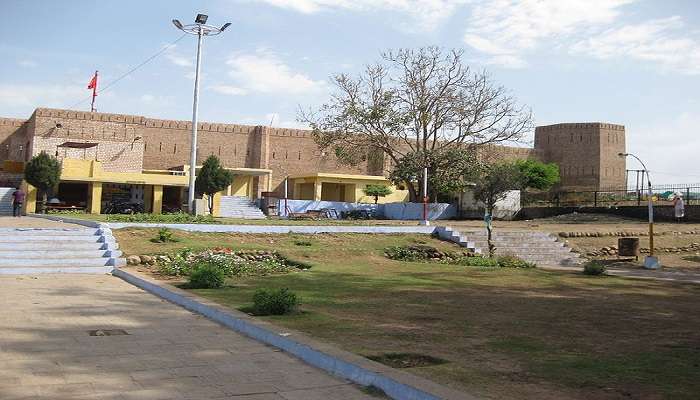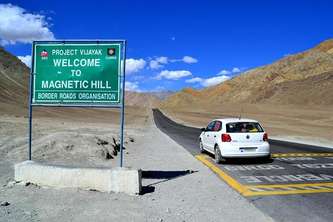Explore Kounsarnag Lake A Journey Through Culture And Nature Of 2025

Kounsarnag Lake is an oligotrophic lake located at a high altitude, i.e. at 3,500m from the sea level. It is situated in the Pir Panjal mountain range, which is under the Kulgam district, Jammu, and Kashmir. The length and width of the lake are 3 km and 75 km, respectively. Generally, the lake serves as a key source of the Veshaw River (a tributary of the Jhelum River). The lake is regarded as holy in the Hindu religion. An ancient belief suggests that the lord Vishnu created this lake by stamping his foot. Hence, it is also sometimes referred to as Vishnu Pad. Around this lake, the snow-covered mountains, the tranquil beauty of the surroundings, and the rich tradition give you a chance to indulge in a paradise-like feeling.
About Kounsarnag Lake: Location

Image Source: Pexels
The lake is enclosed around the peaks on all three sides. It is a snow-covered lake in Kulgam, Jammu and Kashmir. It serves as an excellent source of water for the Veshav River, located nearly 4,000 feet above sea level. The key trek route to reach this lake spans from Aharbal to Kousarnag through Kungwattan and Mahinag. It nearly takes you three days to get there.
Once you reach the lake, trekkers generally come across the stunning views of the lake’s blue hue water and the rough terrain. Besides, the crystal-clear, peaceful water and calm summits make it a perfect spot to rejuvenate yourself with nature. With many top places to visit in Kounsarnag Lake, your trip here will surely be memorable.
Also Read: Best Places To Visit In Jammu
History Of Kounsarnag Lake
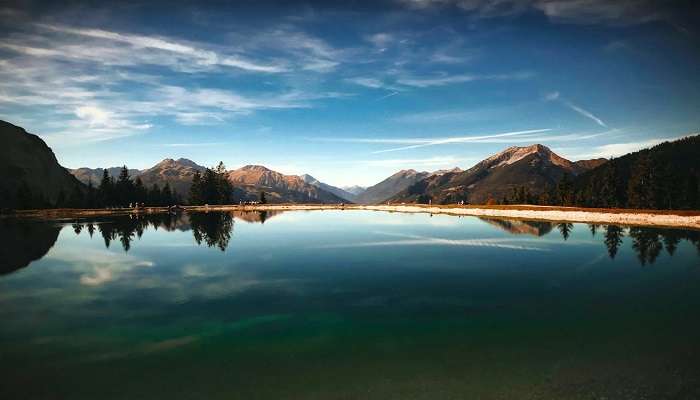
Image Source: Pexels
Origins: Primarily, this lake is fed by melting glaciers and snow. It is the source of the Veshaw River, which is a tributary of the Jhelum River.
Mythology: The lake is considered pious, as per Hindu mythology. A legend who belonged to the Nilamata Purana mentioned that after a significant flood, the boat that carried Saptarishi and the Vedas got stuck in the mountains above the lake. There is also a belief that a Hindu god named Vishu created this lake by stamping his foot.
Transformation: Across a period of several years, the lake perceived gradual transformation into an urbanised region owing to infrastructural and industrial development.
Ecological importance: This lake holds the utmost ecological significance because it delivers water to half part of South Kashmir’s districts. Note that Kashmir’s civil society opposed the transformation by mentioning cultural aggression.
Places To Visit In Kounsarnag Lake
Here are the top places that you can’t miss in 2024 that are available near the Kounsarnag Lake.
1. Mahinag And Kongwattan

Image Source: Pexels
The picturesque meadows of Kongwattan, Mahinag, and Kongwattan are located at around halfway to the high altitude of Kousernag Lake. You can reach this place once you complete two days of trekking towards the lake. A lush green canopy of alpine trees encloses all the sides of this tourist destination. This aspect contributes to its tranquility. Moreover, it is mainly inhabited in summer by various cattle herders.
Timings: Typically throughout the day, especially suitable during the summer months from May to September
Entry Fee: Free
Distance: Mahinag: Nearly 5 km from Kounsarnag Lake; Kongwattan: Nearly 11 km from Kounsarnag Lake.
Related Post: Things To Do In Jammu
2. Verinag

Image Credit: ThePoeticFrame for Wikipedia
Verinag is a spectacular spring situated around Kausar Nag Lake. It is regarded as one of the most pious springs of Jammu and Kashmir. It is a preferred tourist destination for Hindu pilgrims. What makes it so unique and enticing is the Mughal gardens and natural springs.
Generally, the recommended time to visit this place is daytime as it lets you fully enjoy the historical significance and beauty. Mostly, the weather here is pleasant and is perfect for outdoor activities and sightseeing. Eliminate your confusion on how to reach this place because it is very near to the lake.
Timings: 10:00 AM – 06:00 PM throughout the week
Entry Fee: 15 INR per individual for the spring; 10 INR per person for the gardens
Distance: 36 km away from Kounsarnag Lake
3. Mattan

Image Credit: Arshad Hussain Sofi for Wikipedia
Mattan comes from the state’s Anantnag district. It is well-known for its historical importance and even for its religious significance, specifically the old Martand Sun Temple. The temple is about the Sun god and is one of the most vital Hindu temples. If you aspire to learn more about the state’s history and local culture, then you can visit this place.
Timings: 6:00 AM to 7:00 PM
Entry Fee:
Distance: Approximately 35 km from Kounsarnag Lake
Related Post: Shopping In Jammu
4. Kokernag
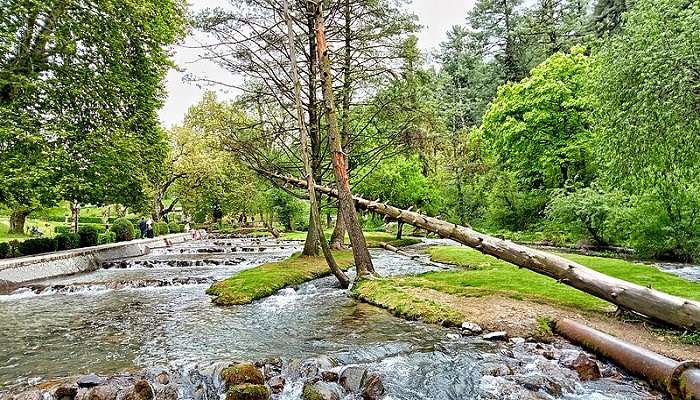
Image Credit: Suhayl091 for Wikimedia Commons
Kokernag is a village situated around the Kausar Nag Lake. If you prioritise enjoying nature and peace, then this place is worth visiting. It is an excellent tourist spot for people willing to experience the local lifestyle and culture. From May to September, many tourists come here. The reason is that during these months, the weather is pleasant and appropriate for discovering scenic natural beauty. If you stay overnight here, you can explore the tranquillity of the place. The garden area supports accommodations.
Timings: 10:00 AM – 6:00 PM
Entry Fee: INR 20 per individual
Distance: Approximately 35 km from Kounsarnag Lake
5. Betab Valley
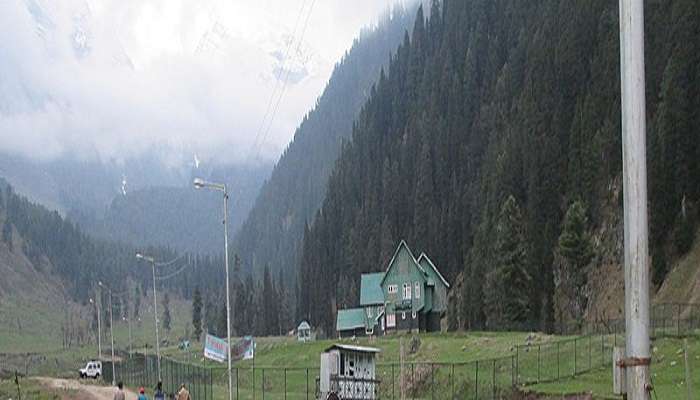
Image Credit: Billjones94 for Wikimedia Commons
Located a short distance away from Kounsarnag Lake, Betab Valley is one of the admirable scenic valleys of the estate. It presents a spectacular view of the well-known Harmukh and Ghansa mountains. Also, it lets tourists trek and camp. May to October is considered the best period to visit because the weather here is comfortable, and the valley stays easily accessible.
Timings: 8:00 AM – 8:00 PM
Entry Fee: INR 100 per person
Distance: Approximately 36 km from Kounsarnag Lake.
Related Post: Temples In Jammu
6. Chiranbal

Image Credit: Sadi Sid for Wikimedia Commons
Chiranbal is the mesmeric meadows of Kounsarnag Lake. You can easily reach it by hiring a 4*4 vehicles during the summer. Forests enclose this meadow and support camping. Moreover, the meadow is famous for its three B’s of basecamp.
The daytime lets you relish picnicking, trekking, and many other activities. You can easily explore the breathtaking landscapes and alpine meadows during the daytime. The rough terrain means that it is not advisable to travel on hilly roads during the night.
Timings: All day
Entry Fee: Free
Distance: Approximately 25 km from Kounsarnag Lake
How To Reach Kounsarnag Lake

The lake is seamlessly and efficiently connected to critical cities of Jammu Kashmir, ensuring easy access through various transportation modes. The following section clears confusion on how to reach Kounsarnag Lake:
By Air
The closest airport to this lake is Sheikh-ul-Alam International Airport, located in Srinagar. Right from this airport, you can either hire a taxi or get on a bus to Aharbal, and it will ultimately take you to Kounsarnag Lake.
By Train
The closest railway station to the lake is Arwani, Bijbehera. Right from this station, you can get on a bus or hire a taxi to reach Kounsarnag Lake.
By Road
The road transportation mode helps you to reach this lake from Srinagar, which is approximately. 70 km away. You can get on a cab or bus from Shopian and Srinagar to reach the lake.
You May Also Like To Read: Places Near Jammu
Kounsarnag Lake is popularly known as a dynamic place with scenic natural beauty. In addition to being elegant, the lake is well-known for featuring cultural richness and traditional vibes. The corresponding trail helps tourists access the narrow pine forests, green meadows, and elegant alpine pastures. The serene water body may seem like a turquoise hue. Besides, the pine needles smell and the songs of birds appease the feeling of the soul. Many top places to visit in Kounsarnag Lake will make your trip memorable and worthwhile. Have you decided to explore Kounsarnag Lake and its tranquil environment? Well, you can book a trip to Kashmir and experience the beauty of this impressive destination.
For our editorial codes of conduct and copyright disclaimer, please click here.
Cover Image Credit : Mutahir Showkat for Wikipedia
Frequently Asked Questions About Kounsarnag Lake
What time is considered the best to visit Kounsarnag Lake?
The best time commonly found for visiting the Kounsarnag Lake is from June to September. During these months, the weather is typically observed to be pleasant, and even the trek routes are conveniently accessible.
What time is regarded as the finest time to trek around Kounsarnag Lake?
When it comes to trekking around this lake, the best months to consider are July and August. During these months, the temperature is mild and also relative with less odds of rain, so, the terrain during these two months is perfect for tourists to walk.
For what is Kounsarnag Lake most famous?
The lake is highly renowned for boasting its crystal clear water. It is regarded as one of the most elegant and tranquil lakes in the state.
What is the colour of the water in Kounsarnag Lake?
Kounsarnag Lake’s water is teal in colour. This colour is due to the melting glaciers.
What activities do tourists usually prefer when visiting the Kounsarnag Lake?
Along with trekking, many tourists prefer solo camping. It is done to make sure trekkers can extend the fun and relish the natural peace. It feels satisfying when one sleeps under the stars with the mesmerising sounds of water.
People Also Read:
Chilika Lake Jaisamand Lake Tani Jubbar Lake

Unveil the hidden treasures of the globe and turn every travel dream into reality. As a Content Writer, I am passionate enough to craft stories from ancient wonders to modern marvels. My words paint the picture-perfect itinerary for unforgettable experiences. Let my words be your trusted guide to immerse in the diverse culture and discover the beauty of the unknown.





